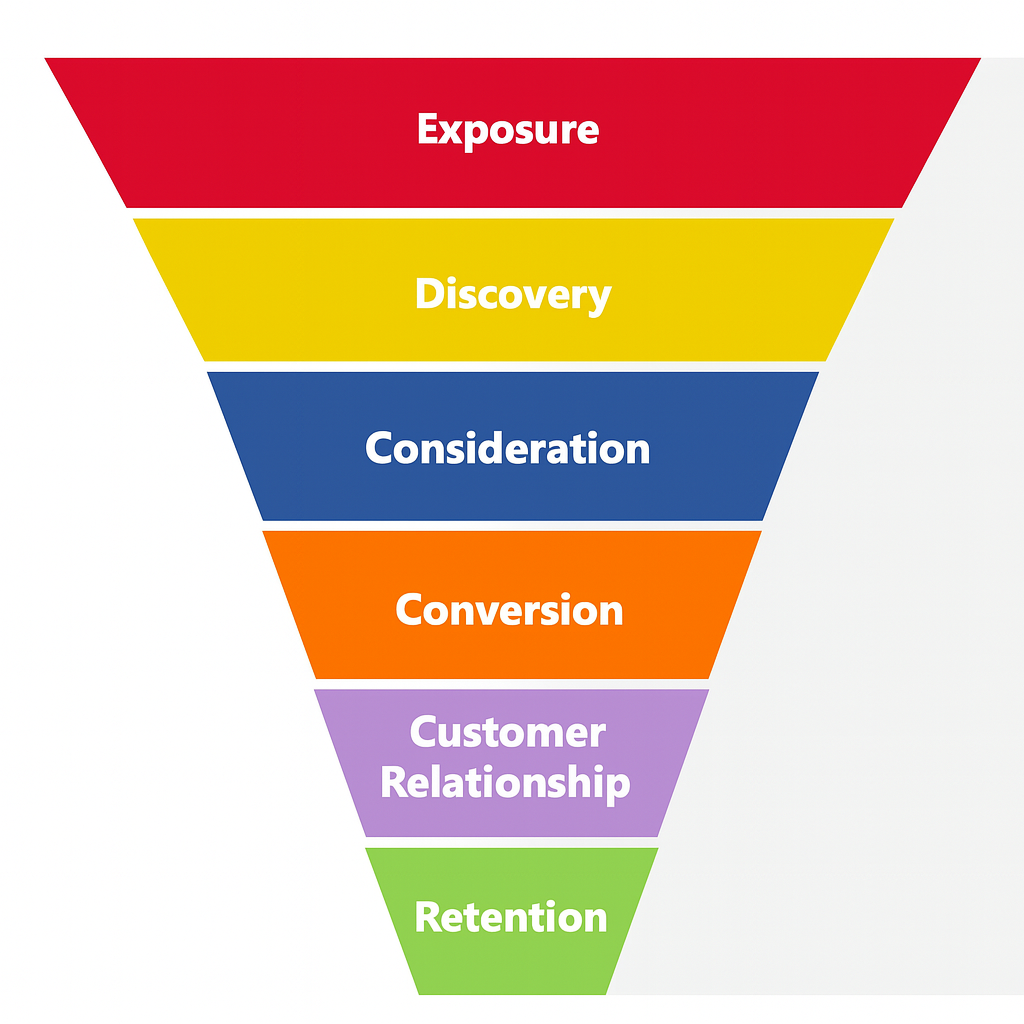In today’s fragmented digital ecosystem, customer behavior no longer moves through a traditional marketing funnel. Users navigate across multiple platforms, devices, and channels with increasing unpredictability. Each interaction carries new weight, and each action demands relevance. These patterns have pushed brands to rethink how they construct and interpret funnels. Instead of one linear sequence, they now build systems with shifting pathways and dynamic milestones.
The concept of the funnel has not disappeared. It has changed shape. Think of it as a flexible container that expands and contracts based on user context. One person might start at the research phase via a blog article. Another may convert instantly after an influencer mention. Yet another may interact with a brand ten different ways before taking a measurable step.
Relevance drives every successful touchpoint. When digital funnels shift in real time to accommodate new data and behavioral cues, brands see stronger retention, deeper engagement, and more qualified conversions. Personalization is no longer a competitive edge, it’s the entry fee.
WebDev200 helps brands make sense of these shifts by designing funnels that are responsive, not reactive. The strategy prioritizes relevance across each user interaction, ensuring that brand presence remains aligned with audience intention rather than static stages.
Signal Weight Across Funnel Layers

At the core of digital funnel evolution lies signal interpretation. Every click, swipe, scroll, pause, or exit represents a form of behavioral feedback. These signals inform how a funnel adapts. A user watching half of a product video sends a different message than one who bookmarks a pricing page. Yet both deserve tailored responses.
Funnels that treat all signals equally end up applying one-size-fits-all messaging that weakens the conversion path. In contrast, funnels that assign weighted value to signals create layers of depth. A high-weight signal prompts the system to elevate urgency, while a lower-weight signal might trigger a slower build of brand familiarity.
Modern marketing technology allows brands to track dozens of micro-actions across platforms. Email opens, social shares, ad views, and website dwell time all combine to create a behavioral signature. Relevance happens when funnel content responds to that signature.
Rather than relying solely on demographics, businesses must recognize intent through movement. Is the user navigating with curiosity, comparison, or commitment? Understanding the reason behind the interaction becomes more valuable than the action itself.
By assigning the right weight to signals, brands can re-sequence funnels for greater impact. Users don’t feel forced forward or held back. They move in sync with the story being told and that’s where conversions happen with integrity and consistency.
Experience Mapping Through Funnel Flexibility

Funnels used to prioritize efficiency. Now they prioritize resonance. Experience mapping, the art of matching content and structure to user behavior, is the foundation of flexible funnel architecture. It allows marketers to identify where users are mentally, emotionally, and logistically in their journey.
This type of mapping requires a new understanding of user expectations. A returning visitor may not need retargeting. A first-time buyer may need more than a discount code. Experience mapping asks one critical question at every step: “What is the user hoping to find next?”
To answer that question, funnels must break free from rigid content sequencing. Instead of pushing content in a predetermined order, they serve content based on engagement windows. These windows emerge from behavior trends, time on site, referral source, or even time of day.
The result is a dynamic experience that adapts without appearing invasive. Email flows adjust based on site interaction. Landing pages present different value propositions depending on traffic source. Social campaigns retarget based on story completion rates.
WebDev200 integrates experience mapping as a standard part of digital funnel strategy. Every layer of the funnel, from awareness to education to conversion, flexes based on what users signal they want, not what brands expect them to want. This shift repositions funnels as co-created experiences rather than brand-owned paths.
Momentum Points in Decision Architecture

Relevance within funnels is also shaped by momentum. Every user action either adds or subtracts velocity from the conversion path. Funnels that build with momentum in mind help users feel progress, clarity, and excitement. Funnels without it feel repetitive or disconnected, leading to drop-off.
Momentum points are those moments of perceived progress that make a user feel closer to a goal. It could be completing a style quiz, entering an email for early access, or previewing how a service works. These small affirmations turn passive interest into active movement.
The architecture behind momentum must be intentional. Funnels must not only capture interest but sustain it. Visual cues like progress bars, contextual recommendations, or mini-rewards help maintain flow. Text elements like personalized calls to action, smart headlines, or confirmation messages support emotional pacing.
Brands that ignore funnel pacing often overload users early or underwhelm them late. Both mistakes cost conversions. Smart funnels recognize when to build tension and when to resolve it. Just like in storytelling, there is a rhythm to decision-making that must be respected.
When WebDev200 designs for momentum, the focus goes beyond UX and into behavioral architecture. The team prioritizes not just clarity of action, but timing of emotion. A well-timed message can validate a decision. A poorly timed one can create hesitation. Relevance is about rhythm as much as message.
Reframing Metrics in Dynamic Funnels

Traditional funnel metrics often emphasize static goals. Bounce rates, click-through percentages, and form fills have their place, but they do not tell the full story of engagement or relevance. Dynamic funnels require dynamic metrics.
Instead of evaluating performance through single-touch conversion rates, brands must evaluate funnel effectiveness through signal velocity, revisit patterns, scroll depth, or even cohort sentiment. These new dimensions offer a clearer view of whether content connects or simply appears.
Metrics also need to focus more on insight than output. It’s not just about what performed best. It’s about why it performed well for one audience and not another. This shift requires brands to move beyond dashboards and into deeper data storytelling.
Funnels are not conversion machines. They are resonance engines. They don’t just push users down a path, they respond to human behavior in real time. This means performance needs to be reviewed not just at the surface level, but through user intent layers.
WebDev200 encourages brands to measure not just results, but relevance. By tracking whether each stage in the funnel supports user identity, expectation, and action readiness, performance becomes a reflection of empathy, not just efficiency. The question is no longer “Did they convert?” but “Did we connect?”
Connect With Our Team
If your digital funnel still operates like a checklist of steps, it may be time to evolve. Today’s audiences demand relevance, flexibility, and personalized experiences that respond to their changing needs. Whether you are building from scratch or retooling an existing framework, success begins with strategic alignment.
Connect with our team at WebDev200 to discover how your funnel can shift with purpose, respond with clarity, and convert with authenticity.

